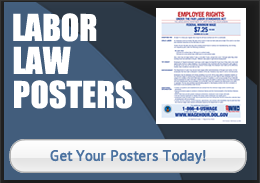Complete Story
06/04/2020
Valvoline Reports Second-Quarter Results
Source: aftermarketNews
Valvoline Inc., a leading supplier of premium branded lubricants and automotive services, recently reported financial results for its second fiscal quarter ended March 31, 2020.
“We continue to focus on the health and safety of our employees, customers and business partners as well as on support for the communities where we operate as we manage through the COVID-19 health crisis,” said Sam Mitchell, CEO. “Our results in Q2 reflect a strong start to the quarter, where we saw sales up 2%, including low double-digit same-store sales growth, and EBITDA growth in the mid-teens for the first two months. In March, we began to see meaningful impacts to our business due to the decline in miles driven caused by the COVID-19 shelter-in-place and lockdown regulations. In March, we also saw a healthy rebound in China as local restrictions there began to ease.
“As the COVID-19 crisis continues, we are monitoring the situation closely and proactively managing our operational response and taking steps to maintain financial flexibility.”
Second-Quarter Results
Reported second-quarter 2020 net income and EPS were $63 million and $0.33, respectively. These results included net after-tax expense of $11 million ($0.06 per diluted share), primarily related to debt redemption costs of $14 million ($0.08 per diluted share) and pension and other post-employment benefit (OPEB) income of $7 million ($0.04 per diluted share) as well as other expenses totaling $4 million ($0.02 per diluted share). Reported second-quarter 2019 net income and EPS were $63 million and $0.33, respectively. These results included after-tax expense of $4 million ($0.02 per diluted share) primarily related to restructuring expenses.
Second-quarter 2020 adjusted net income and adjusted EPS were $74 million and $0.39, respectively, compared to adjusted net income of $67 million and adjusted EPS of $0.35 in the prior-year period (see Table 7 for reconciliation of adjusted net income and adjusted EPS). Adjusted EBITDA in the quarter was $134 million, a 10 percent increase compared to the prior-year period, including a reduction to variable compensation expense of $14 million recorded in Unallocated and Other due to reduced full-year earnings expectations.
Operating Segment Results
Quick Lubes
- SSS grew 0.7% overall, 0.5% for company-owned stores and 0.8% for franchised stores
- Operating income decreased $4 million to $40 million; EBITDA decreased $3 million to $50 million
- Quick Lubes ended the quarter with 1,419 total company-owned and franchised stores, a net increase of 12 during the period and 92 versus the prior year
Quick Lubes’ system-wide SSS increased 0.7% for the full-quarter and 11.6% for the first two months ending in February. These growth rates build off very strong performances in the prior-year periods of approximately 10% each. However, with shelter-in-place directives implemented across most of North America, March results were impacted by an abrupt decrease in miles driven with SSS declining to 18.2%, primarily due to lower transactions, which impacted overall segment profitability.
Valvoline continues to invest in the brand as part of its long-term strategy, including technology, non-oil change services, front-line talent and network expansion.
Nearly all company-owned and franchised stores remain open, leveraging the company’s minimal-customer-contact, stay-in-your-car service model while flexing store labor in response to reduced traffic. The company is following federal, CDC and state regulations and has implemented process adjustments to keep store employees and customers safe.
Core North America
- Lubricant volume declined 7% to 20.9 million gallons
- Branded premium mix increased 420 basis points to 57.7%
- Operating income increased $7 million to $47 million; adjusted EBITDA increased $6 million to $51 million
The improvement in segment profitability year-over-year was primarily driven by favorable mix and benefits of the operating expense reduction program launched last year.
The majority of the volume decline was in the installer channel, driven by the company’s decisions to not renew lower-margin business and to repurchase inventory from a distributor partner as part of ongoing efforts to improve inventory management. As expected, branded volume in the retail channel declined versus the prior year period but improved sequentially.
International
- Lubricant volume declined 9% to 13.7 million gallons
- Lubricant volume from unconsolidated joint ventures declined 13% to 8.6 million gallons
- Operating income decreased $5 million to $18 million; EBITDA decreased $5 million to $19 million
The International segment was impacted by COVID-19 for the majority of the quarter, beginning in China in late January and expanding to most regions by the end of March. Sales and volume trends in China improved noticeably in March, construction of the company’s lubricants plant restarted and work-from-home protocols substantially ended.
The decline in segment EBITDA was largely driven by lower volume, decreased profit contribution from unconsolidated joint ventures and unfavorable foreign exchange impacts of $1 million.
Balance Sheet and Cash Flow
- Total debt of approximately $2.0 billion and net debt of approximately $1.2 billion
- On February 25, the company completed the issuance of 4.250% Senior Notes due 2030 with an aggregate principal amount of $600 million and used the proceeds to redeem its 5.500% Senior Notes due 2024 with an aggregate principal amount of $375 million and pay related expenses and fees, prepay $100 million of its Term Loan A and use the remainder for general corporate purposes
- During the second quarter, Valvoline repurchased $60 million or 3.4 million shares of its common stock; share repurchases were suspended in the second half of March as the COVID-19 crisis accelerated
- Year-to-date cash flow from operations of $154 million; free cash flow of $97 million
- Total net pension and OPEB obligations of $374 million as of March 31, with a total 84% funded status; no material required contributions expected before 2023
As of April 30, 2020, Valvoline had cash and cash equivalents on hand of approximately $775 million, essentially unchanged from March 31. The company also has access to additional liquidity of over $100 million under its credit and accounts receivables securitization facilities. The company continues to evaluate options to enhance its liquidity and financial flexibility.
Outlook
“The overall impact of COVID-19 was relatively moderate in Q2,” Mitchell said. “While we expect more significant impacts in the current quarter, we are encouraged by improving recent trends across our segments, especially as miles driven begins to improve with regions starting to reopen.”
“Our cash position remains healthy driven by the actions we’ve taken to reduce operating costs and increase financial flexibility as well as due to the stability and durability of our preventive-maintenance business model, which has performed well across previous economic cycles. Given the strength of our balance sheet and competitive advantages of our operations coming into the COVID-19 pandemic, I am confident that we can weather the challenges it presents.
“The talent and endurance of our people are providing a solid foundation for our business today and position us well for the expected recovery to come. I want to thank the entire Valvoline team for their continued dedication and commitment to our people, customers, partners and communities during this time of uncertainty.”
Mitchell continued, “Our strategy is to build a more service-driven company over time and that has not changed even in this challenging environment. We remain confident in the long-term health and outlook for the business.”
In a press release dated March 24, 2020, Valvoline withdrew its previous guidance for the current fiscal year due to the uncertainty surrounding the ongoing COVID-19 impacts on the business. The duration and severity of these impacts remains unclear, and as such the company is not providing guidance for fiscal 2020 at this time.





